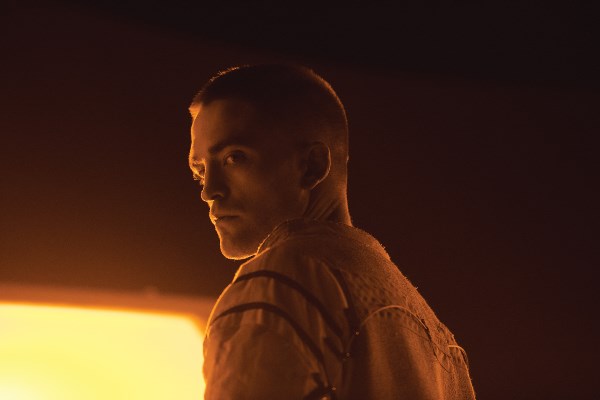High Life is French director Claire Denis’s first film set in the future, on a space ship, and in English, because, as she claimed at the New York Film Festival, “In space, you speak either Russian or American English,” based upon the real-life space race. Even in the extreme environment she conceives, human relationships are still central. Through teasing flashbacks that come across as mind games for viewers, she intriguingly reveals how an onboard high-tech machine is a confined setting for the space crew to explore their primal physical and emotional needs.
The opening scenes visually establish the human needs the ship still serves, like the luscious hydroponic garden that grows edibles to satisfy the crew’s hunger. But, slyly going beyond a classic 2001 image and Alien’s “In space no one can hear you scream” tagline, a baby is heard insistently crying. Baby Willow has to wait to eat until caregiver Monte (Robert Pattinson) finishes space walking and making repairs to keep the ship livable for another day. Also among his errands, he casts off into space the body bags of dead crew members. After that work is done, Monte beautifully demonstrates tender paternal love as he comforts Willow. High Life is full of such contrasts.
Willow will grow up only to know this environment, but Monte remembers life on earth, where as a feral teen he killed in an act of revenge. Now in space, he works with a diverse crew (André Benjamin, Mia Goth, and Lars Eidinger) who are kept in cells behind bars: this space capsule is a death row prison manned by criminals. Each was offered an alternative sentence: you can help dying Earth by capturing the energy of a black hole beyond the solar system. While the spacecraft’s acceleration (conveniently) creates artificial gravity, the crew members are beyond communication with Earth.
One older female criminal may be in charge: Dr. Dibs (a long-haired Juliette Binoche), monomaniacally convinced she is saving humankind. Her mission is to test fertility and reproduction in space. Something of a mad scientist, she rigidly enforces her protocol of collecting semen from the male crew members. Keeping each person—male and female—physically separate, her reward to participants is to provide access to the private space to facilitate sexual release that she also avails for herself intensely and frequently, with her long braid flying. Behind her back, the crew calls her “Dr. Slut,” even as some find her hair quite erotic. (Binoche’s performance is more like the kind of obsessed eccentric that Isabelle Huppert usually plays.)
As Monte matures over the years of travel, he tries to resist the doctor’s research. With little dialogue in the claustrophobic spaces designed by Icelandic-Danish conceptual artist Olafur Eliasson, tensions escalate, psychologically and physically, in unpredictable ways that prevents the scenario from becoming just an intellectual exercise. All characters pointedly express their own priorities for survival and theories about the viability of insemination.
While other sci-fi movies and TV series have imagined crews, usually villains, sent into space as punishment, Denis is not exploring the usual alien life forms. Instead, she plumbs the human depths, leaving open the implications for the survivors. The images that stick are of love and the warmth of Monte and Willow (played so naturally together with Pattinson’s best friend’s daughter) hurtling through the chill of space.
Denis specifically wrote this atypical role for Pattinson at his request; they felt High Life went so well they are planning a second feature together for the real future—set in the past—to intrigue their fans.

















Leave A Comment